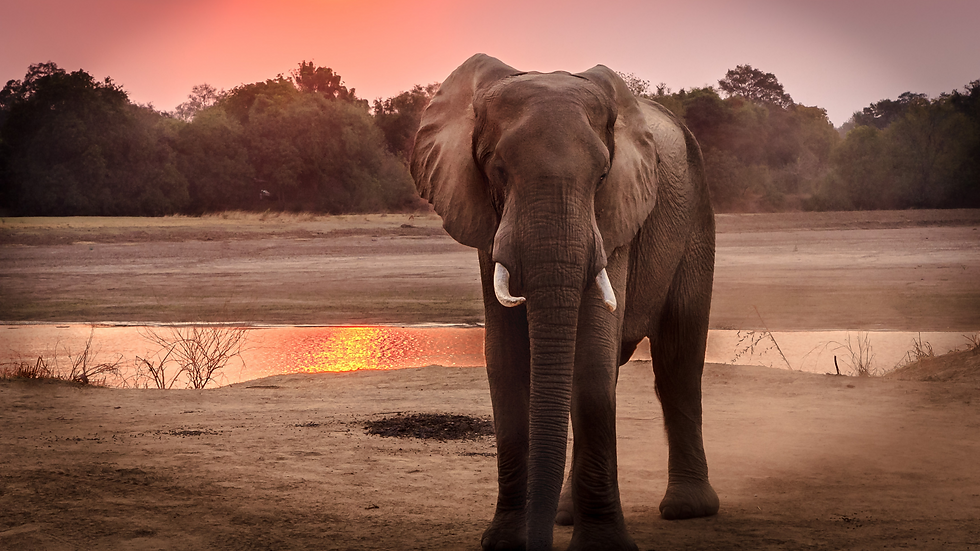Harnessing Artificial Intelligence for Climate
- Regina Cervera

- Mar 3, 2022
- 3 min read
Updated: Mar 4, 2022

The problem
Technological and ecological transformation are two of the most pressing challenges of the 21st century. We have entered a worrying era, with record levels of greenhouse gasses and associated heat pouring into our atmosphere, as warned by the world's leading climate scientists. Likewise, close to one million species are threatened with extinction due to human activity, and climate change threatens the ecological stability of the planet. Although recent international commitments are far from being fulfilled, how we harness all available resources and tools will be vital for humanity's development and adaptation to a rapidly changing environment. We need to create ways to combine digital and technological tools with the climate crisis, making sure people are at the center.

AI for Climate
AI systems are a growing technology that is increasingly being adopted across the industry, governments, and startups. Its impact is such that it is expected to add 15 trillion USD to the global economy by 2030, a 14% rise.
These technologies can be harnessed in a variety of ways to address environmental challenges and climate change-related events. AI systems can have a major impact on climate action in several sectors, significantly reducing emissions from energy consumption, electricity and heavy industry, decarbonizing transportation, supporting adaptation and resilience to climate change in societies, agriculture and forestry, facilitating carbon sequestration, advancing physical climate models, supporting biodiversity monitoring and protection, and more. Additionally, many of these applications of AI systems can provide relevant information for policy making.

Use cases from around the world
For the purpose of this blog post, the focus of the following sections will highlight some amazing use cases that support biodiversity and ecosystems protection, and how they differ around the world:
One now-extended use of AI systems for conservation is using game theory models to protect endangered species that face illegal poaching and trafficking. The project PAWS (Protection Assistant for Wildlife Security) is providing these models to help predict where poachers are more likely to strike and therefore, provide recommendations to rangers to conduct more effective patrols. These technologies are empowering rangers to feel safer when they’re patrolling conflicted areas, while providing vital input for algorithm training and improvement.

In the Amazon Rainforest, the project Mapping the Andean Amazon Project (MAAP) is using a combination of remote sensing technologies and Machine Learning to rapidly detect deforestation across the Amazon in real-time. In parallel, remote indigenous communities have been empowered to use mobile devices and satellite technologies to alert when trees are being cut down. Results show that since they are involved, less trees are being lost in those areas.

The Wild Book project (Wild Me) is an open-source software framework that combines wildlife research with AI systems, citizen science, and computer vision to help fight extinction. The project identifies individuals of species through publicly posted images, creating public engagement that provides data to train algorithms, helping scientists to better understand how biodiversity is being impacted by climate change and human activities.
Also, the potential uses of AI for the environment are not limited to protection, but can be also harnessed to optimize ecosystem restoration efforts. Given that we are walking through the Decade on Ecosystem Restoration and this year’s World Wildlife Day is being celebrated under the theme “Recovering key species for ecosystem restoration”, it is important to recognize the power of these technologies to boost these efforts. Take Restor, a science-based open data platform that supports and connects the global restoration movement, using data from global models, on-the-ground research, and user-shared data.
A call to action
These are very impactful ways in which AI systems can be used for climate, however, it is important to recall that AI-driven technologies are not only impacting humans, but also influencing all other life forms on the planet in complex ways, and that these technologies are not necessary the only solution, but one of the many available tools that we can take advantage of.
Working towards climate change adaptation and mitigation is a multidimensional effort that needs all hands on board possible, and it is vital to act together. Collaboration is key, and nowadays, many multisectorial groups are harnessing AI systems and other advanced technologies in their processes. With strategic alliances between industries, academia, NGOs, governments and communities, AI systems can be effectively used for societies’ sustainable development. For example, the AI for Climate initiative is now engaging in impactful conversations with local communities to deploy AI-powered conservation strategies in natural reserves, involving people and users throughout the process.
Want to learn more amazing use cases from around the world and how to get involved in climate action using advanced technologies? Check out the 2021 edition of the AI for Climate Global Forum and experience interesting conversation, access to scientific papers, GitHub repositories, a masterclass on biodiversity protection with AI systems, state-of-the-art reports and much more.





Comments